A cacao ceremony is a spiritual ritual in which you drink ceremonial cacao to connect with yourself, others and nature. Cacao is a plant that has been used as a sacred drink by indigenous peoples in Central and South America for thousands of years. In this blog post, you will learn more about the history and origin of the cacao ceremony, how it works and what you should keep in mind.
What is a cacao ceremony?
A cacao ceremony can also be described as a form of meditation that involves drinking a cup of warm, liquid ceremonial cacao made from raw cacao beans. The cacao contains many antioxidants, minerals and theobromine, an alkaloid that lifts the mood, opens the heart and increases circulation. The cacao also acts as a gentle stimulant, increasing alertness and creativity without making you nervous. These are just some of the positive effects of ceremonial raw cacao on the body and mind .
Ceremonial cacao is more than just a drink. It is an opportunity to connect with yourself, others and nature on a deep level. The cacao can help release blockages, heal emotions and strengthen intuition. A cacao ceremony is often accompanied by music, singing, dancing, prayer, breathing exercises or other spiritual practices that deepen the experience.
The history of cacao cermonies?
The cacao ceremony has a long and rich history that dates back to the ancient civilizations of Central and South America. The Maya, Aztecs, Olmecs and other peoples worshipped cacao as a divine plant that gave them wisdom, strength and health. The Aztecs called it “xocolatl”, meaning “bitter water”, and drank it on religious, social and political occasions. Cacao was so valuable that it was used as means of payment and as offerings.
There is no such thing as a "real cacao ceremony" in that sense. Rather, cacao was used on various ceremonial occasions. The actual cacao ceremonies, if you like, relate to the cacao plants themselves. In the Mayan tradition, three ceremonies (Kotzij') take place in the life cycle of the cacao plants on the indigenous farms to show recognition and respect for the cacao trees and to bring positive energy into the plants: when the cacao is planted, during flowering and at harvest. These rituals are intended to strengthen the connection to nature and ensure a harmonious relationship with the plants.
The Spanish, who came to America in the 16th century, discovered cacao and brought it to Europe, where it quickly became popular. They added sugar, milk, spices and other ingredients to change its taste. Cacao lost its spiritual significance and became a luxury item for the upper classes.
The cacao ceremony as we know it today is a revival of the ancient tradition practiced by various spiritual teachers and communities around the world. It is based on the respect and appreciation for cacao as a sacred medicine that connects us to our essence.
How does a cacao ceremony work?
A modern cacao ceremony can be designed differently depending on the leader, location, occasion or group. The following cacao ceremony serves as an example, which is often practiced in this way, or something similar:
- Preparation : Before participating in a cacao ceremony, one should prepare physically and mentally. This includes not eating for at least two hours beforehand, drinking plenty of water, abstaining from alcohol, caffeine and other stimulants, and setting an intention for the ceremony.
- Welcome : At the beginning of the ceremony, the participants are welcomed by the leader, who explains the rules, the process and the effects of the cacao. The leader also introduces the cacao, which is usually made from organic, fair trade and raw cacao beans. The cacao can be refined with honey, cinnamon, ginger, cardamom or other spices to improve its taste and effects.
- Blessing : The leader blesses the cacao with a prayer, meditation, song or any other method to charge it with positive energy. He also thanks the cacao plant, the farmers who grew it and all the beings who were involved in its production. He also asks for the permission and protection of the spiritual forces that accompany the ceremony.
- Drinking : The leader distributes the cacao to the participants, who hold it in their hands and connect it with their intention. They then drink the cacao in small sips while concentrating on their breath, their body and their feelings. The cacao takes about 20 to 40 minutes to take full effect, which can vary depending on the amount, quality and sensitivity of the drinker.
- Sharing : After everyone has drunk the cacao, the main part of the ceremony begins, which may include different activities depending on the leader and the group. These may include music, singing, dancing, yoga, meditation, Reiki, massage, journaling, painting, or other creative or healing expressions. The goal is to use the cacao to open up, relax, enjoy, learn, and grow. The leader can also create a space for sharing experiences, questions, insights, or challenges to support and empower the group.
- Closing : At the end of the ceremony, the leader thanks the participants, the cacao, the spiritual forces and everyone else who made the ceremony possible. He closes the ceremony with a prayer, meditation, song or other method to harmonize and ground the energy. He also gives some tips on how to prolong and integrate the effects of the cacao, such as drinking plenty of water, eating healthy, resting and writing down your experiences.
Of course, you can also perform your own cacao ceremony. You can find instructions on how to do this here .
What are the benefits and risks of a cacao ceremony?
A cacao ceremony can have many benefits for physical, mental, emotional and spiritual health. Some of these include:
- Stress relief: Ceremonial cacao helps calm the nervous system, relax muscles and promote the release of endorphins, serotonin and dopamine, which are responsible for well-being.
- Heart opening: Cacao helps to activate the heart chakra, which is responsible for love, joy, compassion and connection. It also helps to release emotional blockages, traumas and fears that close the heart.
- Increased creativity: Cacao helps stimulate the right side of the brain, which is responsible for intuition, imagination, art and innovation. It also helps promote the inspiration, vision and manifestation necessary for creation.
- Expansion of consciousness: Cacao helps to activate the pineal gland, which is responsible for spirituality, wisdom, knowledge and enlightenment. It also helps to deepen perception, introspection and meditation, which are necessary for self-knowledge.
However, a cacao ceremony also has some risks that should be considered. Some of them are:
- Overdose: Cacao contains theobromine, which in high doses can lead to unpleasant side effects such as headaches, nausea, heart palpitations, tremors or insomnia. To avoid this, you should not drink more than one cup of ceremonial cacao per ceremony and listen to your body.
- Interaction: Cacao can interact with some medications, dietary supplements or other substances that can increase or decrease its effects. These include antidepressants, blood pressure medication, painkillers, hormones or other psychoactive substances. To avoid this, you should consult your doctor or pharmacist before taking part in a cacao ceremony and find out about possible interactions.
- Contraindication: Cacao is not suitable for all people who suffer from certain health conditions or are in certain phases of life. These include, for example, pregnancy, breastfeeding, heart problems, high blood pressure, diabetes, epilepsy, schizophrenia or other mental illnesses. To avoid this, you should consult your doctor or alternative practitioner before taking part in a cacao ceremony and find out about possible contraindications.
Where can you take part in a cacao ceremony?
You can experience a cacao ceremony in different places and with different people. For example, there are online platforms that offer cacao ceremonies that you can take part in from home. All you need is a computer, an internet connection, a cacao and a quiet environment. There are also local organizers who organize cacao ceremonies in different cities and countries that you can attend in person. You can register on their website or contact them directly. There are also private groups that hold cacao ceremonies among friends, family or like-minded people that you can join by invitation or recommendation. You can also lead a cacao ceremony yourself if you feel qualified and trained to do so. If you are looking for a cacao ceremony provider, please contact us.
Conclusion
A cacao ceremony is a wonderful way to connect with yourself, others and nature. It has a long and rich history inspired by the ancient civilizations of Central and South America. It has many benefits for physical, mental, emotional and spiritual health, but also some risks to be aware of. It can be experienced in different places and with different people, depending on your own preferences and capabilities. If you would like to learn more about the cacao ceremony or experience one yourself, please get in touch with us.
I hope you enjoyed this blog post and learned something new. If you have any questions, suggestions or feedback, feel free to drop me a message. I look forward to hearing from you. 😊


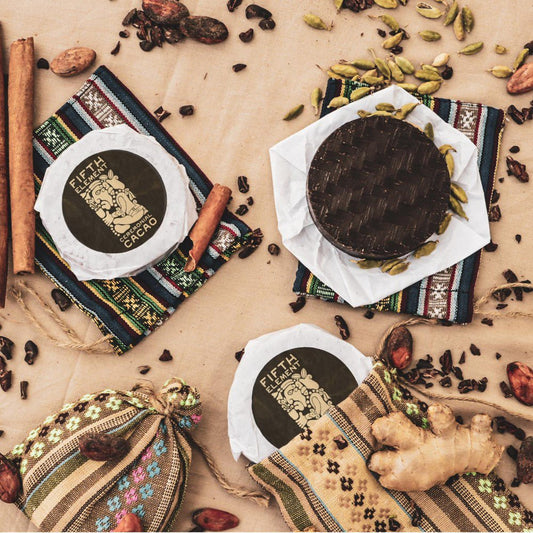
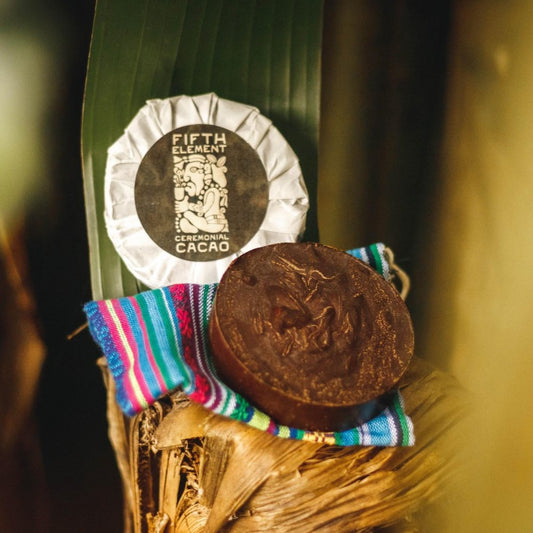
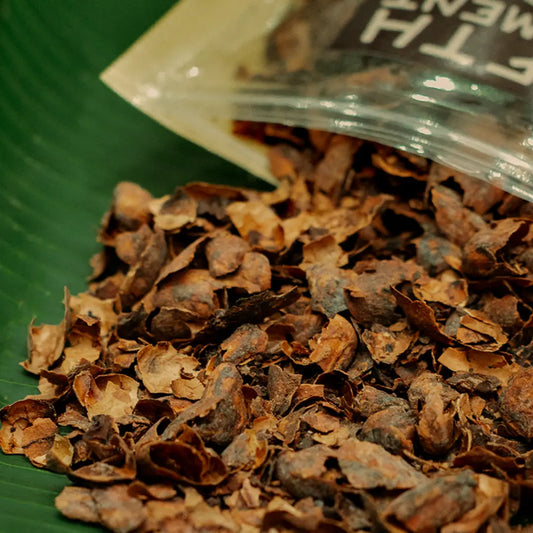
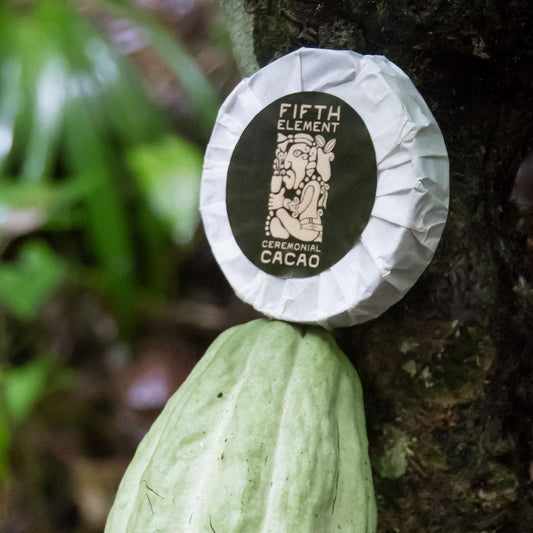
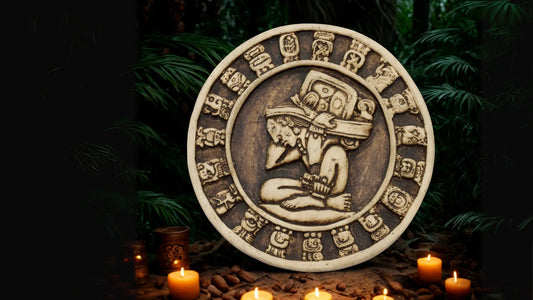
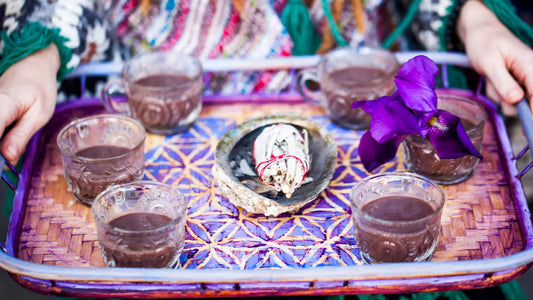
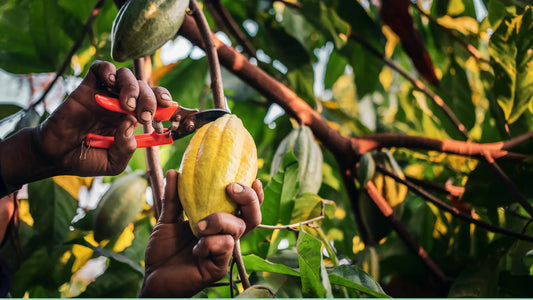
1 comment
Ich habe das Buch “Kakaozeremenonie mit dem entheogenen Zaubertrank der Kakaogöttin” geschrieben und möchte verschiedene Rohkakaosorten ausprobieren und ihre spezifische Wirkung kennenlernen. Was empfehlt ihr mir.